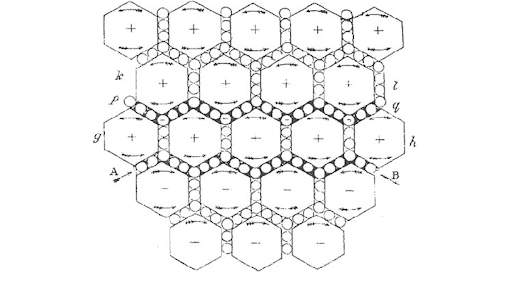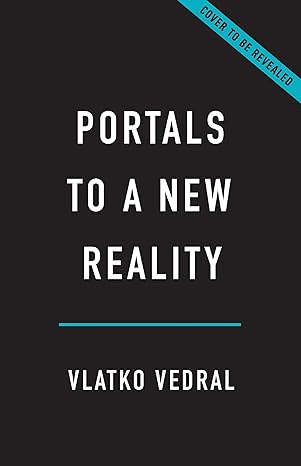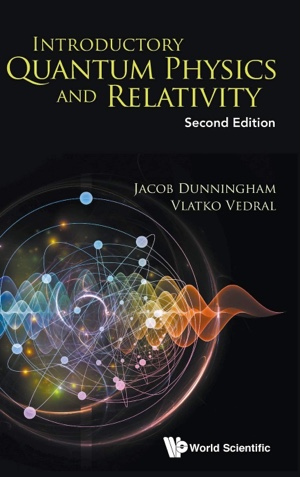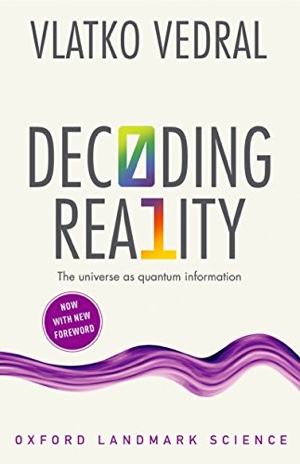Inevitable like human stupidity: Quantum Field Theory
The field concept was an ingenious idea by Michael Faraday, who probably was the best experimental physicist of all times. The “field” itself also ended up being one of the most useful theoretical tools in modern physics.
Faraday was trying to understand how the electromagnetic forces are transmitted. Take the following experiment. A wire is wrapped in a coil and a piece of iron is moved though it back and forth. What happens next? We get an electrical current flowing though the wire! This is known as Faraday’s induction: a changing magnetic field (due to the shaking of the iron bar) induces an electric field (that drives the current in the wire).
Once you know how to express this mathematically (a time derivative of the magnetic field equals a particular spatial derivative – affectionately known as the curl – of the electric field) you are ready to understand one of the most geekish jokes I’ve ever heard. It is due to Johnny von Neumann, who, after probably being irritated by someone irrational, said something like: “Complaining about human stupidity is like complaining that the changing magnetic field induces a curl on the electric field”.
In other words, stupidity is inevitable, just like the Faraday induction. Ha, ha, ha. Yes, I know, only a physicists can find this kind of stuff funny…
Incidentally, the above mathematical expression of Faraday’s law is due to Maxwell. It is one of the four equations known as Maxwell’s equations (probably the most beautiful piece of mathematical physics of all times, even to the uninitiated – have a look @ https://www.maxwells-equations.com/). They fully specify the electromagnetic field in the presence of given sources. And, yes, crucially for us here, they are symmetric, so a changing electric field also induces a magnetic field (the so called Ampere’s law).
Faraday had a stunning public demonstration of the electromagnetic induction that goes to the heart of what I want to communicate. He would take an iron bar and a coil to one side of a long table. The coil would be connected with a long wire across the table to a needle at the other end. He would then shake the iron bar and the needle would move, seemingly instantaneously, some 30 feet away. Wow, the audiences in London’s Royal Institution would gasp. Spooky action at a distance!
It sounds like magic. Just, it’s not. And that was Faraday’s point. It looks spooky only because a) we don’t see the medium through which the effect propagates (hint: that’s because there isn’t one) and b) the speed of propagation is very very large (hint: it’s the fastest speed allowed in the universe and it rhymes with “might”). But, there is no magic at a distance in Faraday’s physics. In order to affect something over there by doing something over here, something else has to propagate from here to there. The same thing happens with any remote control; I press a button here and the TV goes off over there.
The changing magnetic field induces an electric field which in turn induces a magnetic field and so on, propagating through the vacuum (point by point) to reach the needle at the speed of light at the other end. So each point in space has a changing electric field which creates a changing magnetic field at neighbouring points, just like a water wave crest at one point moves to the next in the sea (Maxwell had a clever mechanical model with gears and wheels to explain the logic of propagation – see the picture below). At the far end of the table, the changing electric field finally induces a magnetic field at the point where the needle is thereby making it move. That’s the mechanism as far as physics is concerned; all nice and local and causal, no funny stuff at a distance. And so with this, Faraday helped ushered in the new era in physics.

Maxwell’s mechanical model of the electromagnetic field. When the hexagonal gear is turned (i.e. when the magnetic field changes), small balls start moving (you can think of this as the motion of electrons), thereby causing the neighbouring hexagons to turn too. And so on.
I was blown away by this kind of stuff as a teenager (in particular, I was even more blown away when I learnt, during my undergraduate studies, that the electromagnetic field doesn’t actually propagate through the wire and via the moving current, but I will leave this topic for another blog).
Faraday didn’t like action at a distance, which is why he postulated the electromagnetic field. When one electron repels another, this does not happen at a distance (even though they might be separated by a large distance). According to the field view, each electron generates a field in its vicinity which then propagates (via induction and counter-induction) to the other electron. If one electron moves, the other one does not feel the effect until the information has propagated at the speed of light to the other electron. The same is true for other fields like gravity.
The idea is kind of obvious with a hindsight (how else could it be?), but it still took Einstein some 15 years to apply it fully to Newton’s gravity (which itself was initially plagued by instantaneous propagation) and upgrade it to the General Theory of Relativity.
Our best current understanding of the universe comes from quantum field theory. What is the quantum element in field theory? First of all, it needs to be quantum since otherwise we could not account for most of our experiments. More to the point, in the classical field theory, the electric and the magnetic field values are just ordinary numbers. Each point in space has three electric field numbers and three magnetic field numbers assigned to it (and they change in time). That is the electromagnetic field. When this is quantized, the electric and the magnetic fields become operators, or quantum numbers. And it is these operators that exist at every point in space and change with time. That is the quantum electromagnetic field.
Quantum fields do not allow action at a distance, though they are very different to classical fields. Quantum fields have quanta (photons in the case of the electromagnetic field and gravitons in the case of gravity, though the latter have not yet been observed). In the quantum electromagnetic field, the electric field and the magnetic fields cannot be measured simultaneously just like a position and a momentum of a particle cannot in ordinary quantum mechanics (it’s the Heisenberg Uncertainty Principle). Quantum fields come in two basic flavours, in the sense that the corresponding particles are either fermions or bosons (there is an argument for this known as the “spin-statistics” theorem). Fermions are constituents of matter (which is hence stable as fermions do not like to bunch together), while bosons are the particles mediating forces between bits of matter. Even the empty state of quantum fields, the so called quantum vacuum, when there are no fermions or bosons around, can have physical consequences (the Casimir effect is one of them).
Anyway, the main point is that using fields in physics has allowed us to keep the principle that all interactions in physics are local (i.e., no interaction takes place instantaneously at a distance). But, as always, it has also generated new problems. One particularly worrying one is that an arbitrarily small volume of space seems to have an infinite number of degrees of freedom, or, in other words, it appears to contain an infinite amount of information. This gives us a headache as it frequently leads to infinities in our calculations of observable quantities that clearly ought to be finite (such as the electron mass).
The existing infinities, however, might not be a problem with the idea of fields per se. Infinities could be due to the fact that we think of space and time as continuous. Spacetime is the gravitational field of General Relativity, where we have to specify ten numbers (not just six as in the electromagnetic case!) at each point in space and changing in time (if you are confused by this statement, don’t worry, you are not alone). Instead, it could be that space and time themselves are discrete. Some intuitive arguments based on quantizing gravity would indicate that this might indeed be the case. However, none of our experiments show anything like that. At present we can only continue to explore consequences of quantum fields. Although they have been spectacularly successful, and underpin what we call the Standard Model, perhaps one day something unusual will happen to force us to alter them radically. Only time will tell.
Sign up to my substack
BOOKS
ASK ME ANYTHING!
If you'd like to ask me a question or discuss my research then please get in touch.





